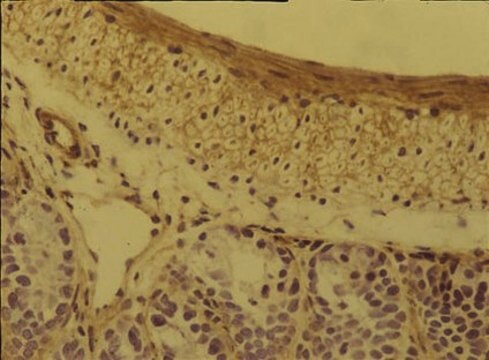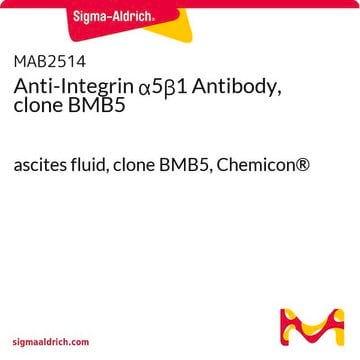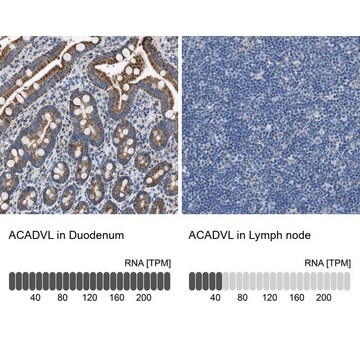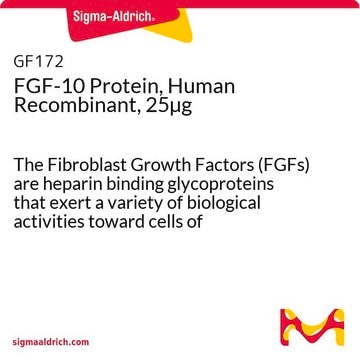MAB1999
Anti-Integrin α5β1 Antibody, clone HA5
clone HA5, Chemicon®, from mouse
Synonym(s):
VLA-5
About This Item
Recommended Products
biological source
mouse
Quality Level
antibody form
purified immunoglobulin
antibody product type
primary antibodies
clone
HA5, monoclonal
species reactivity
pig, human
manufacturer/tradename
Chemicon®
technique(s)
flow cytometry: suitable
immunoprecipitation (IP): suitable
isotype
IgG2bκ
NCBI accession no.
UniProt accession no.
shipped in
wet ice
target post-translational modification
unmodified
Gene Information
human ... ITGA5(3678)
Related Categories
Specificity
Application
Flow cytometry: 10 μg/mL
Does not detect VLA-5 by Western blot.
MAB1999 does not affect VLA-5 mediated cell adhesion to fibronectin.
Optimal working dilutions must be determined by end user.
Physical form
Other Notes
Legal Information
Not finding the right product?
Try our Product Selector Tool.
Storage Class Code
10 - Combustible liquids
WGK
WGK 2
Flash Point(F)
Not applicable
Flash Point(C)
Not applicable
Certificates of Analysis (COA)
Search for Certificates of Analysis (COA) by entering the products Lot/Batch Number. Lot and Batch Numbers can be found on a product’s label following the words ‘Lot’ or ‘Batch’.
Already Own This Product?
Find documentation for the products that you have recently purchased in the Document Library.
Our team of scientists has experience in all areas of research including Life Science, Material Science, Chemical Synthesis, Chromatography, Analytical and many others.
Contact Technical Service








